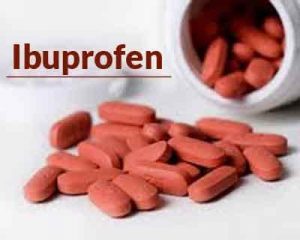- Home
- Editorial
- News
- Practice Guidelines
- Anesthesiology Guidelines
- Cancer Guidelines
- Cardiac Sciences Guidelines
- Critical Care Guidelines
- Dentistry Guidelines
- Dermatology Guidelines
- Diabetes and Endo Guidelines
- Diagnostics Guidelines
- ENT Guidelines
- Featured Practice Guidelines
- Gastroenterology Guidelines
- Geriatrics Guidelines
- Medicine Guidelines
- Nephrology Guidelines
- Neurosciences Guidelines
- Obs and Gynae Guidelines
- Ophthalmology Guidelines
- Orthopaedics Guidelines
- Paediatrics Guidelines
- Psychiatry Guidelines
- Pulmonology Guidelines
- Radiology Guidelines
- Surgery Guidelines
- Urology Guidelines
Ibuprofen linked to severe bleeding risk after tonsillectomy in children: JAMA

USA: Ibuprofen compared to acetaminophen is linked to an increased risk of severe bleeding after tonsillectomy in children, finds a recent study. Findings, published in the journal JAMA, should be considered when selecting a postoperative analgesic regimen.
Pediatric tonsillectomy is a commonly performed procedure. A major concern with the procedure is postoperative pain control as the pain can be severe and can last for up to 10-14 days after surgery. It can also lead to hospital readmissions or ED visits for medications and dehydration. In young children and children with sleep apnea, narcotic pain medications cannot be safely administered at home leaving limited options for pain control, including ibuprofen and acetaminophen. Also, there are concerns regarding bleeding risks associated with the use of ibuprofen after surgery because of its effects on platelet function in blood.
Gillian R. Diercks, Department of Otolaryngology, Massachusetts Eye and Ear Infirmary, Boston, Massachusetts, and colleagues conducted the study to investigate the effect of ibuprofen compared with acetaminophen on post tonsillectomy bleeding (PTB) requiring surgical intervention in children.
The researchers found that they could not exclude a higher rate of severe bleeding in children receiving ibuprofen with the rate of severe bleeding in the ibuprofen group nearly doubling that in the acetaminophen group.
For the purpose, the researchers examined more than 1000 participants examined 1832 children, and included 1091 children. Of 1091, 681 did not meet eligibility and 410 refused to participate. Of 1091, 681 did not meet eligibility and 410 refused to participate. The 741 children that participated ranged in age from 2 years old to 18 and had undergone a tonsillectomy alone or tonsillectomy with adenoidectomy between May 3, 2012, and Jan. 20, 2017. Of the 741 children, 688 of them were included in a modified intention-to-treat analysis.
Participants were randomized to receive ibuprofen, 10 mg/kg (n = 372), or acetaminophen, 15 mg/kg (n = 369), every 6 hours for the first 9 postoperative days. The ibuprofen group consisted of 345 children and 343 were randomized into the acetaminophen group.
Rate and severity of post-tonsillectomy bleeding were recorded using a postoperative bleeding severity scale: type 1 (bleeds that were observed at home or evaluated in the emergency department without further intervention), type 2 (bleeds that required readmission for observation), and type 3 (bleeds that required a return to the operating room for control of hemorrhage). Type 3 bleeding was the main outcome measure.
Also Read: Do Not Prescribe Perioperative Antibiotics for tonsillectomy in Children: New ENT Guideline
Key findings of the study include:
- Of the 688 children included, 65 children experienced at least 1 event of post-tonsillectomy bleeding (PBT). The ibuprofen group had 38 (11%) children experience PBT, while 27 (7.9%) children in the acetaminophen group experienced PBT.
- Among the 38 children in the acetaminophen group who bled, 2 experienced 2 bleeding events.
- In the ibuprofen group, 4 children experienced 2 bleeding events, 1 child experienced 3 bleeding events, and 1 child experienced 4 bleeding events.
- In total, 15.8% of children in the ibuprofen group experienced multiple bleeding events.
- Of the children who experienced bleeding in the acetaminophen group, 14 (51.9%) experienced type 1 bleeding, 9 (33.3%) experienced type 2, and 4 (14.8%) experienced type 3 bleeding.
- In the ibuprofen group, 16 (42.1%) experienced type 1, 12 (31.6%) experienced type 2, and 10 (26.3%) experienced type 3 bleeding.
- The type 3 bleed rate in the acetaminophen group was 1.2% while the rate in the ibuprofen group was 2.9%.
Also, Read Seven out of 8 children may not benefit from tonsillectomy
"This study could not exclude a higher rate of severe bleeding in children receiving ibuprofen after tonsillectomy alone or tonsillectomy with adenoidectomy. This finding should be considered when selecting a postoperative analgesic regimen," write the authors.
"Further studies are needed to understand if bleeding risk is affected when ibuprofen is used for a shorter duration or in combination with acetaminophen for postoperative analgesia," they concluded.
For detailed study log on to doi:10.1001/jamaoto.2019.0269

Disclaimer: This site is primarily intended for healthcare professionals. Any content/information on this website does not replace the advice of medical and/or health professionals and should not be construed as medical/diagnostic advice/endorsement or prescription. Use of this site is subject to our terms of use, privacy policy, advertisement policy. © 2020 Minerva Medical Treatment Pvt Ltd